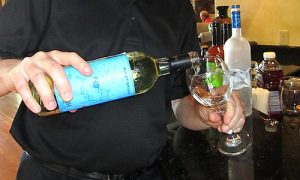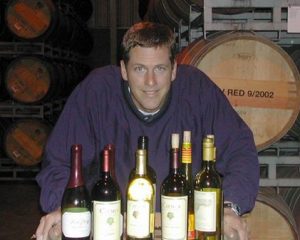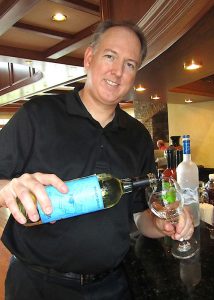 The biggest mistake made when ordering beverages for an event can be an obvious but all too common one.
The biggest mistake made when ordering beverages for an event can be an obvious but all too common one.
“It’s either not enough or too much,” said Thad Cox Jr., longtime proprietor of Ashe’s Wines & Spirits.
Ordering the right amount of alcohol directly affects the bottom line. Order too much, and you end up with overage that can reduce proceeds. Order too little, and guests may depart with second thoughts about attending your next event.
A good rule of thumb is to provide enough alcohol so that each guest has two drinks for the first hour of the party, followed by one drink for every additional hour.

For example, for a three-hour party with 50 guests, you would need 100 drinks for the first hour and 100 drinks for hours two and three combined, for a total of 200 drinks.
For a four-hour event with 100 guests, you would need 200 drinks for the first hour and 200 drinks for hours two and three combined for a total of 400 drinks.
Before we outline the specifics of alcohol orders, remember to always have water and soda options for both those who don’t drink and reasons of hydration. Availability of water is especially important for outdoor events in the heat of summer.
A full bar will offer a combination of beer and wine, as well as a selection of liquor. Don’t forget mixers, and figure about one liter of tonic water, soda water or juice for every three guests.
It also is beneficial to know the number of glasses of wine or cocktails contained in a bottle, and the number of servings of beer in a keg.
Wine: A 750-ml bottle of wine contains about five servings, so divide the number of wine drinks by five to come up with the number of bottles you’ll need. If providing only wine for a sit-down dinner, an easier estimate is a half-bottle of wine per guest. For champagne or sparkling wine, a bottle will fill about six flutes.
Cox has a great tip for events that are using one bartender at a stand. It is better to buy six 1.5 liter bottles of wine than 12 750-ml bottles because the bartender won’t have to open as many bottles and can more readily accommodate those waiting for a glass.
A case of wine generally equals 60 to 65 glasses, so Cox recommends three to four cases of wine for a three-hour event with 50 guests. He suggested four cases was the safer selection, and, if wine is left over, Ashe’s will take back unopened bottles if the labels have not been damaged.
Beer: For larger parties, a keg may seem sensible. Unfortunately, keg sizes are not standardized, but, in general, U.S. half-barrel kegs are 15.5 gallons and quarter-barrels contain 7.75 gallons.
Jerry Kruse, the owner of The Pour Guys, said kegs can be cost-effective, but planners and those hosting an event also need to factor time, delivery and setup. A keg needs four hours to settle and must be iced down before it is ready to be served to guests. That means someone needs to pick up the keg or be onsite early to open the venue for delivery and setup. Kegs also have to be returned, so Kruse noted that savings can be depleted by the end of the process.

A full keg equals about 150 pours and while that may not be enough, two kegs means 300 pours.
“You end up with too much beer,” said Kruse, who added a keg also limits the event to one type of beer.
Kegs also come in pony, quarter and half sizes, and kegs of craft beers have become popular, Kruse said. Kegs will work for an event where one type of beer is acceptable for the guests.
“The makeup of the crowd is really important,” he said.
Kruse has discovered that most people initially mention kegs and then decide otherwise.
“They are thinking it’s cost-effective and then after we walk them through it, it’s not worth it,” he said.
Kruse recommends two to three types of beer at max and keep enough on ice for guests to have cold options for return trips to the bar but don’t chill every case at one time. Excess beer can be returned if not iced down and if the case or 12-pack remains unopened. He said over-ordering is always better and purchase one to two extra cases and return them if unused.
Liquor: Mixed drinks use 1.5 ounces of liquor per drink, so a 750-ml bottle will make about 16 drinks. To determine how many bottles are needed, just divide the number of liquor drinks needed by 16. For example, if you need 200 mixed drinks, that’s 12.5 bottles. As you may have surmised by now, round that to 13 bottles.
Kruse noted that additional costs must be considered, such as the mixers and assortment of glassware needed for different drinks.
One final tip for any event with alcohol: Use a licensed bartender. Kruse noted that at private facilities all alcohol must be controlled by law, so a licensed bartender is a must.
That is how you calculate how much alcohol you’ll need based on the number of guests and the expected duration of your event. And it’s always better to overestimate slightly than to run dry.
Maria Cornelius, a writer/editor for Moxley Carmichael, populates the EventCheck calendar. She is more likely to attend your event if animals are present. Or Miller Lite.
Great information! I pinned it so I will have it later as a reference. Thanks!
So glad it was helpful, Danielle! Jerry Kruse and Thad Cox provided some great advice.